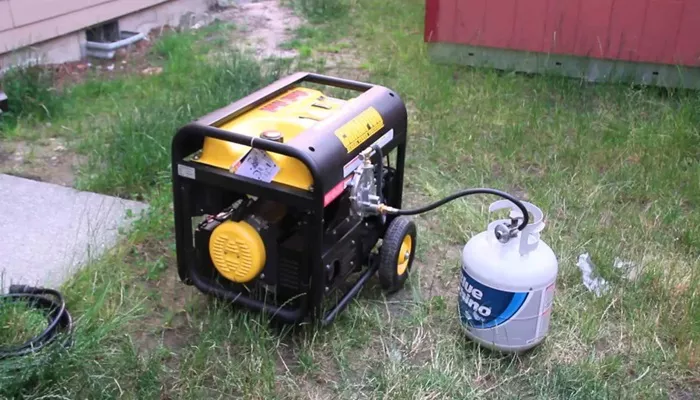Connecting a generator to your home is a practical solution for backup power during outages. However, improper installation can lead to safety hazards, equipment damage, or even electrical fires. This guide provides a step-by-step process to safely connect your generator to your home, covering essential electrical concepts, necessary equipment, and best practices.
Understanding Generator Types and Power Requirements
Before connecting a generator, you must determine the right type and capacity for your home.
Portable vs. Standby Generators
Portable Generators: These are smaller, mobile units that require manual setup. They typically power essential appliances via extension cords or a transfer switch.
Standby Generators: Permanently installed units that automatically activate during a power outage. They connect directly to your home’s electrical panel and provide whole-house power.
Calculating Your Power Needs
To avoid overloading your generator, calculate the total wattage of the appliances you want to run simultaneously. Check appliance labels or manuals for power ratings (in watts). Add them up to ensure your generator can handle the load.
Safety Precautions Before Connecting a Generator
Never Backfeed Power
Backfeeding occurs when a generator is plugged directly into a wall outlet without a transfer switch. This is extremely dangerous because it can send electricity back into the grid, risking electrocution for utility workers and damaging your home’s wiring.
Use Proper Grounding
Generators must be grounded to prevent electric shocks. Follow the manufacturer’s instructions for grounding, usually involving a copper rod driven into the earth.
Operate in a Well-Ventilated Area
Generators emit carbon monoxide, a deadly, odorless gas. Always operate them outdoors, away from windows and doors.
Methods to Connect a Generator to Your Home
Using a Transfer Switch (Recommended)
A transfer switch is the safest way to connect a generator to your home. It isolates your home’s circuits from the utility grid, preventing backfeeding.
Steps to Install a Transfer Switch:
Choose the Right Switch: Select a manual or automatic transfer switch based on your generator type.
Turn Off Main Power: Shut off the main breaker before installation.
Mount the Switch Near the Panel: Install the transfer switch close to your main electrical panel.
Connect Wires: A licensed electrician should wire the transfer switch to your panel, ensuring correct circuit selection.
Connect the Generator: Plug the generator into the transfer switch using a heavy-duty power cord.
Using an Interlock Kit
An interlock kit is a cheaper alternative to a transfer switch. It allows you to safely switch between utility and generator power without backfeeding.
Installation Steps:
Purchase a Compatible Kit: Ensure it matches your electrical panel model.
Install the Kit: A professional electrician should mount the interlock mechanism.
Follow Safety Protocols: The interlock prevents the main breaker and generator breaker from being on simultaneously.
Direct Connection via Extension Cords (For Limited Use)
If you only need to power a few appliances, heavy-duty outdoor-rated extension cords can be used.
Steps:
Use Only Outdoor-Rated Cords: Look for cords labeled “W” or “SW-A” for durability.
Plug Appliances Directly: Connect essential devices (fridge, lights) to the generator.
Avoid Overloading: Do not exceed the generator’s wattage capacity.
Choosing the Right Generator Cables and Connectors
Power Cord Types
10-Gauge Cords: Best for high-wattage appliances (5,000+ watts).
12-Gauge Cords: Suitable for medium loads (up to 3,500 watts).
14-Gauge Cords: For light-duty use (under 1,500 watts).
Inlet Box Installation
For a permanent connection, install an outdoor-rated inlet box wired to your transfer switch. This provides a secure plug-in point for your generator.
Testing and Maintenance
Testing Your Setup
- Start the generator and let it warm up.
- Flip the transfer switch or interlock to the generator position.
- Verify that selected circuits receive power.
Generator Maintenance Tips
- Change oil and filters regularly.
- Store fuel properly (use stabilizers for long-term storage).
- Run the generator monthly to keep it in good condition.
When to Hire a Professional Electrician
While some steps can be DIY, wiring a transfer switch or interlock kit requires a licensed electrician to ensure compliance with local electrical codes (NEC in the U.S.). Improper installation can void insurance coverage or cause fires.
Conclusion
Connecting a generator to your home safely involves understanding power requirements, using the right equipment, and following strict safety measures. A transfer switch is the best method for seamless backup power, while extension cords are only suitable for temporary use. Always consult a professional for complex wiring tasks to ensure a safe and reliable setup.
By following this guide, you can keep your home powered during outages without risking safety or damaging your electrical system.

